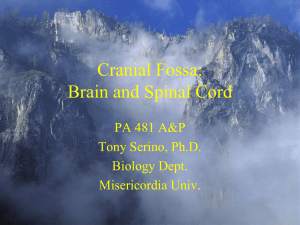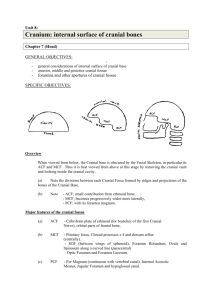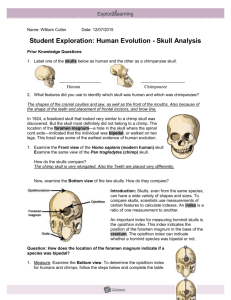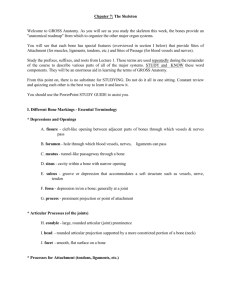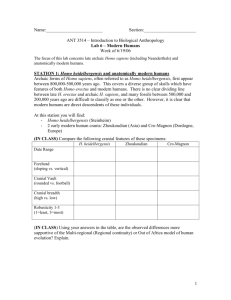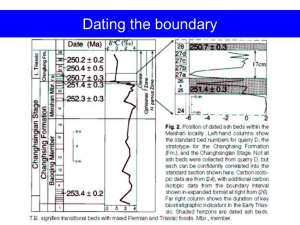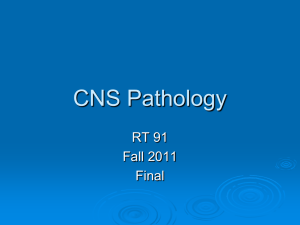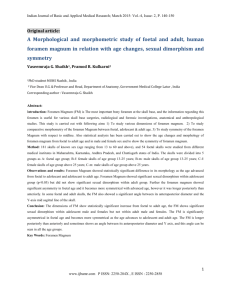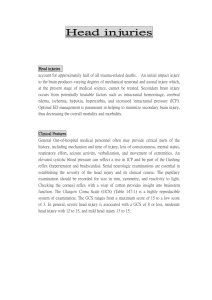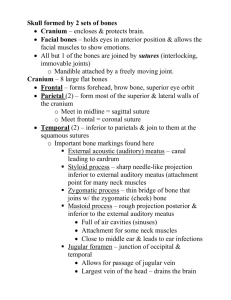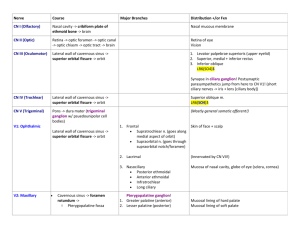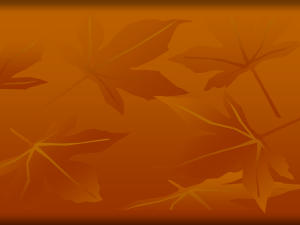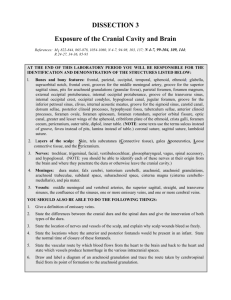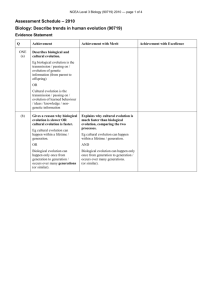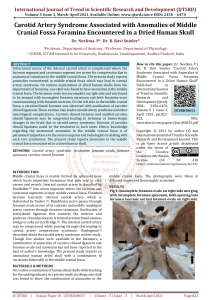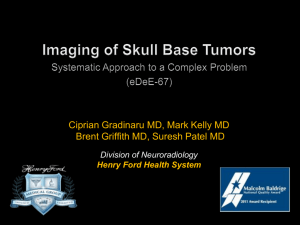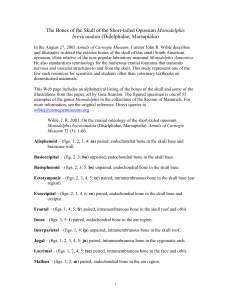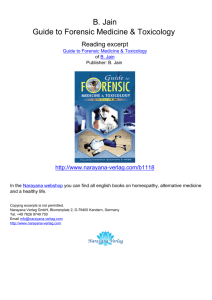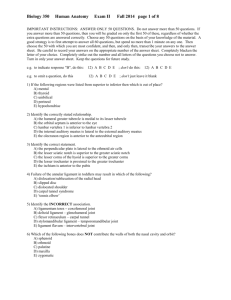Cranial Fossa Use the autopsy saw to cut the calvaria in a flat cut
advertisement
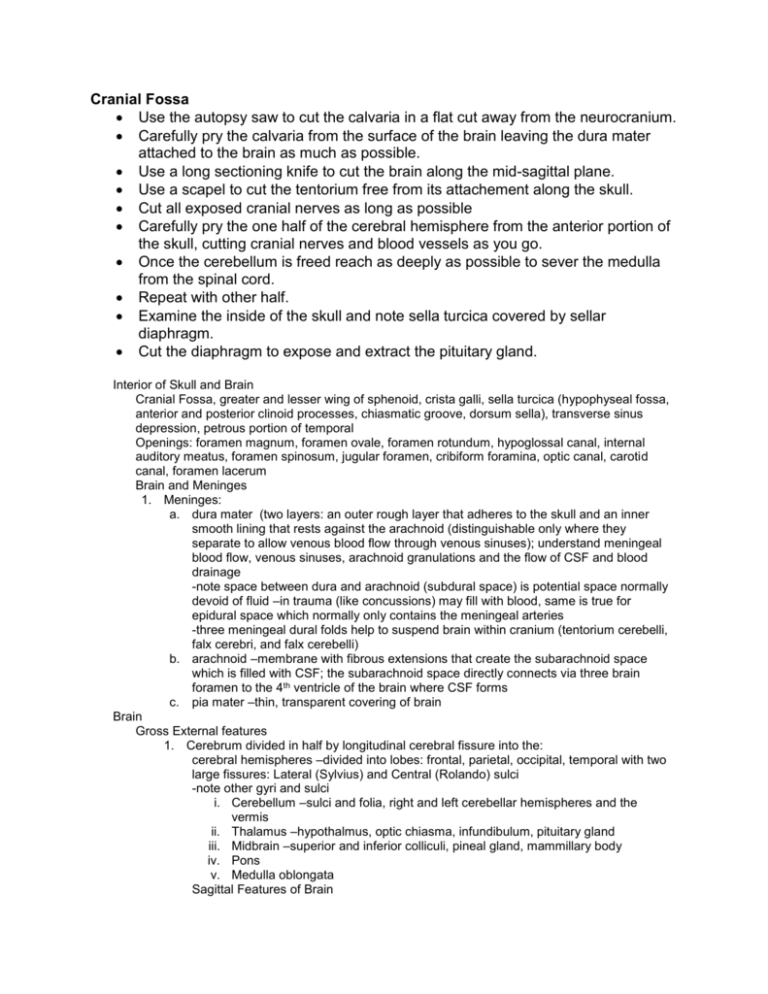
Cranial Fossa Use the autopsy saw to cut the calvaria in a flat cut away from the neurocranium. Carefully pry the calvaria from the surface of the brain leaving the dura mater attached to the brain as much as possible. Use a long sectioning knife to cut the brain along the mid-sagittal plane. Use a scapel to cut the tentorium free from its attachement along the skull. Cut all exposed cranial nerves as long as possible Carefully pry the one half of the cerebral hemisphere from the anterior portion of the skull, cutting cranial nerves and blood vessels as you go. Once the cerebellum is freed reach as deeply as possible to sever the medulla from the spinal cord. Repeat with other half. Examine the inside of the skull and note sella turcica covered by sellar diaphragm. Cut the diaphragm to expose and extract the pituitary gland. Interior of Skull and Brain Cranial Fossa, greater and lesser wing of sphenoid, crista galli, sella turcica (hypophyseal fossa, anterior and posterior clinoid processes, chiasmatic groove, dorsum sella), transverse sinus depression, petrous portion of temporal Openings: foramen magnum, foramen ovale, foramen rotundum, hypoglossal canal, internal auditory meatus, foramen spinosum, jugular foramen, cribiform foramina, optic canal, carotid canal, foramen lacerum Brain and Meninges 1. Meninges: a. dura mater (two layers: an outer rough layer that adheres to the skull and an inner smooth lining that rests against the arachnoid (distinguishable only where they separate to allow venous blood flow through venous sinuses); understand meningeal blood flow, venous sinuses, arachnoid granulations and the flow of CSF and blood drainage -note space between dura and arachnoid (subdural space) is potential space normally devoid of fluid –in trauma (like concussions) may fill with blood, same is true for epidural space which normally only contains the meningeal arteries -three meningeal dural folds help to suspend brain within cranium (tentorium cerebelli, falx cerebri, and falx cerebelli) b. arachnoid –membrane with fibrous extensions that create the subarachnoid space which is filled with CSF; the subarachnoid space directly connects via three brain foramen to the 4th ventricle of the brain where CSF forms c. pia mater –thin, transparent covering of brain Brain Gross External features 1. Cerebrum divided in half by longitudinal cerebral fissure into the: cerebral hemispheres –divided into lobes: frontal, parietal, occipital, temporal with two large fissures: Lateral (Sylvius) and Central (Rolando) sulci -note other gyri and sulci i. Cerebellum –sulci and folia, right and left cerebellar hemispheres and the vermis ii. Thalamus –hypothalmus, optic chiasma, infundibulum, pituitary gland iii. Midbrain –superior and inferior colliculi, pineal gland, mammillary body iv. Pons v. Medulla oblongata Sagittal Features of Brain a. Distinguish features from above list b. Corpus callosum, intermediate mass, fornix, septum pellucidum, choroid plexus, arbor vitae, the 4 ventricles, and the cerebral aqueduct Blood Supply c. Circle of Willis, internal carotid artery vertebral arteries, posterior communicating, anterior communicating, basilar artery and posterior, middle and anterior cerebral arteries; see x-rays too d. Study Blood Supply from book Cranial Nerves 12 know by name and number –from model and book diagrams
